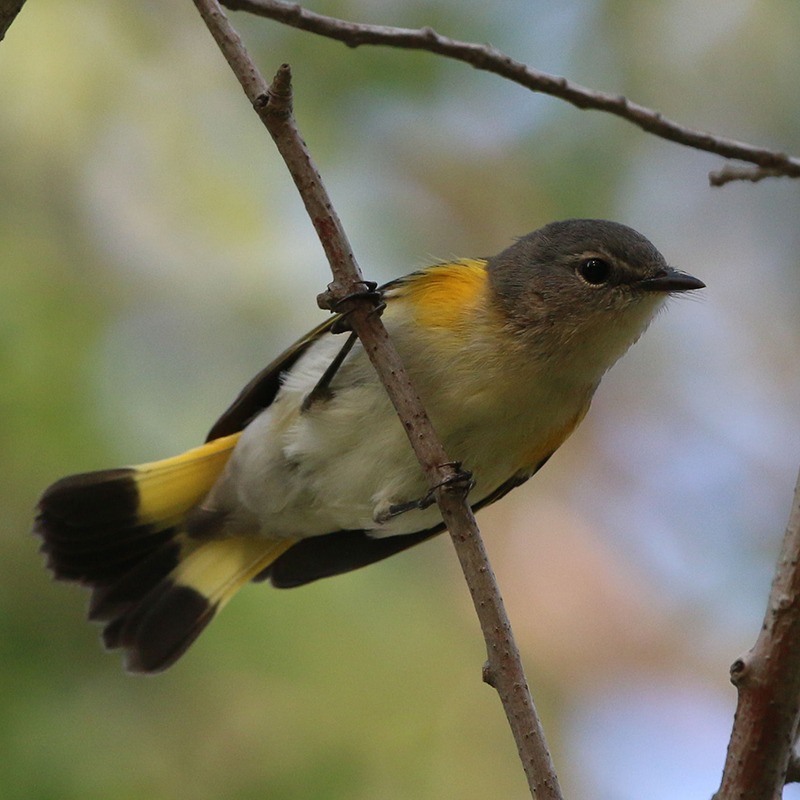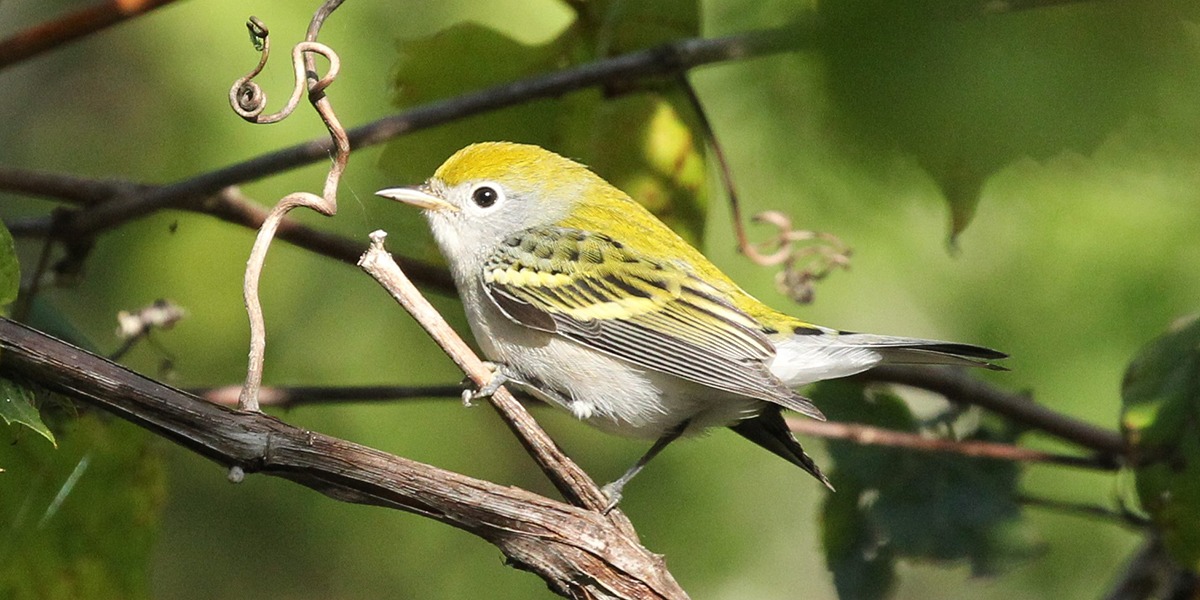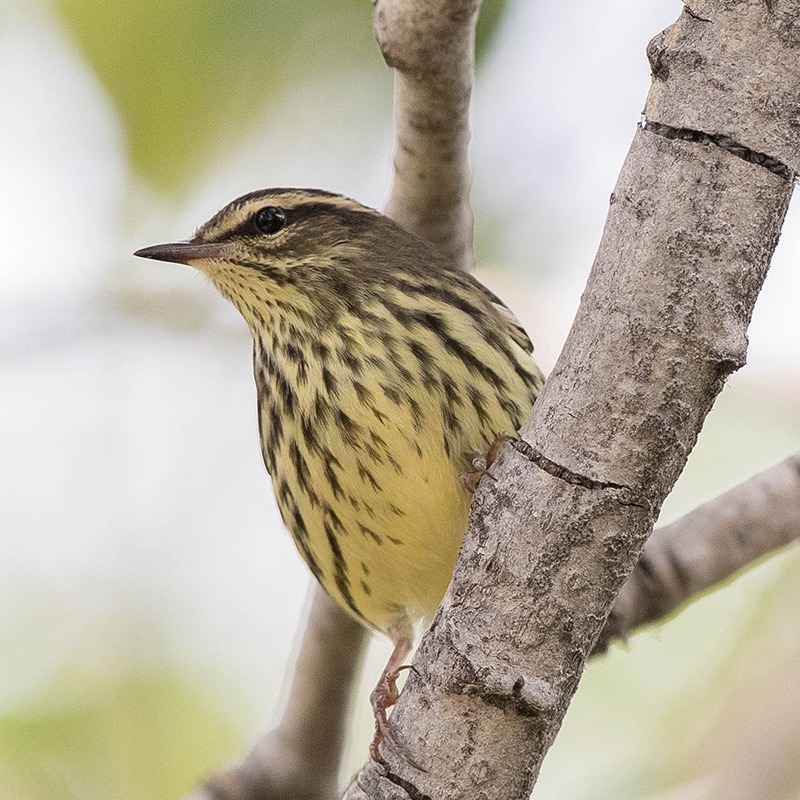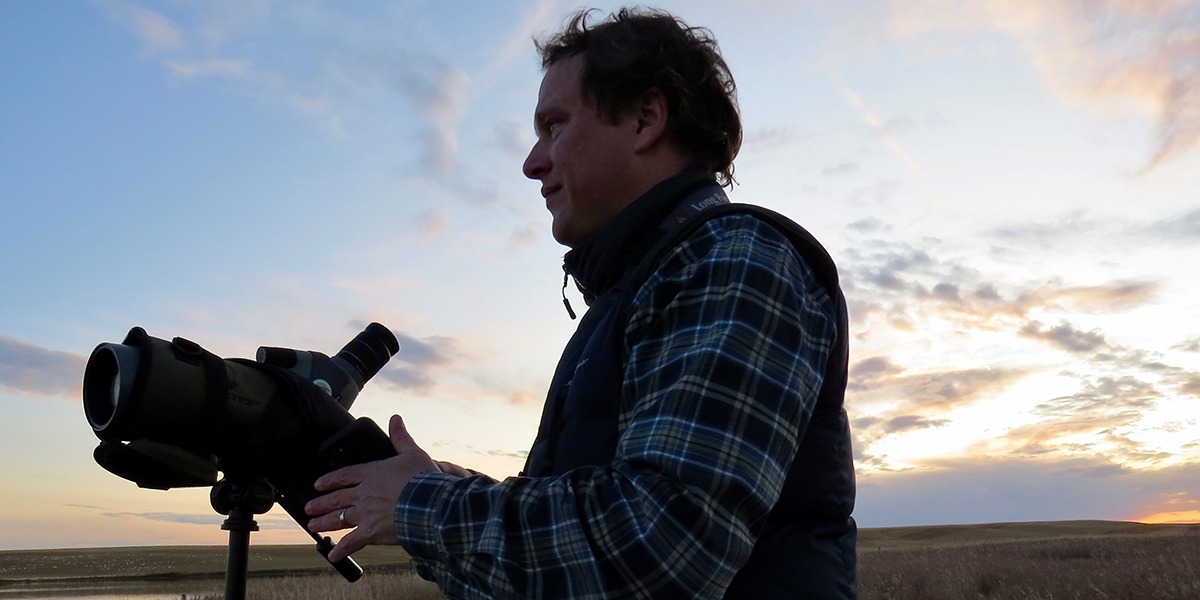By Jody Allair, Director, Citizen Science and Community Engagement, Birds Canada
As a young birder growing up in the 90s in Peterborough, Ontario, I was always enamoured with fall. There was just something about those cool crisp nights, the amazing colours on display in the forests, and the lakes filled with waterfowl. And as I began to know more about birds, I started to see that fall is one of the birdiest times of year. I seemed to find raptors; the first northern finches; and loads of warblers, thrushes, and sparrows everywhere there was natural habitat. This was especially true at bird migration focal points, such as Presqu’ile Provincial Park on Lake Ontario and Long Point on Lake Erie. In fact, volunteering at Long Point Bird Observatory during fall migration as a teenager helped lay the ground work for my career with, and passion for, birds. Seeing dozens of migrating Black-and-white, Blackburnian, Yellow, and Chestnut-sided warblers was a feast for the eyes. And realizing that each morning would bring some new avian surprises is a feeling that continues to excite me to this very day.

American Redstart Photo: Jim McCabe
What was also apparent on those fall days was the lack of people out birding – even at migration hotspots. Sure, you would still see many of the local birding stalwarts, but it was nowhere near the numbers that you would see in similar locations in early May. So why aren’t more people birding in the fall?
Could it be that they just don’t realize how amazing the birding is? I would argue that some of the most amazing migration spectacles in Canada occur in the fall. My shortlist includes the shorebird migration on the Bay of Fundy; the amazing sea birding off Newfoundland and Vancouver Island; the tremendous concentrations of geese and cranes in Saskatchewan; the raptor migration at Hawk Cliff, Ontario; and the massive influxes of migrant songbirds at places like Point Pelee, Ontario, and Tadoussac, Québec…just to name a few.

Chestnut-sided Warbler Photo: James Lees
Or are people holding back because of a perception that fall birding is too difficult? This is something I hear from time to time – especially in reference to identifying warblers in the fall. I’ve often wondered if the (in)famous “confusing fall warbler” plates from the Peterson Field Guide series helped contribute to this. In my opinion, using the term “confusing” to describe a group of birds immediately puts up a barrier, which could prevent some people from giving it a go. One commonly-cited advantage to spring birding is that the birds are in full song and sporting their bright breeding plumages, making them easier to identify. Well that may be true in many cases, plenty of species are just as beautiful in fall (see basic plumaged Chestnut-sided Warbler as an example). “Tricky but doable fall warblers” is how I would have described them. The majority are readily identifiable with a bit of practice and patience.
If you have yet to dip your toe in fall birding, here are some more points to consider. First, you have more time to enjoy migration because it happens over a longer period than in spring. In spring, birds are rushing to their breeding grounds, whereas in fall, they take time to pack on the fat before heading south to Mexico, Central America, or even southern South America.
There are also more birds to see compared to in the spring. In addition to the adult birds, you now have all of the newly fledged young attempting their first fall migration.

Northern Waterthrush Photo: Jim McCabe
And here’s the best part. During the fall you can find migratory birds just about anywhere. Many of my favourite encounters happen in my own yard or at my favourite local park. For example, I was recently woken up by a Northern Waterthrush calling right outside my window. I ran out of bed, got dressed hastily, threw on my sandals, grabbed my binoculars, and ran outside. I’m pretty sure I wasn’t fully awake yet, but I did not mind one bit as I knew full well that I only see Northern Waterthrushes on the Alberta prairies for a couple days each spring and fall – today might be my only chance to enjoy one of these charming and underappreciated little gems. To my amazement, I discovered my yard and adjacent greenspace was crawling with newly arrived migrants! Tennessee and Yellow warblers were all over the place and a Canada Warbler appeared right in from of me, a first for my local patch! There was nothing particularly special about the weather or the location, and that’s the beauty of birding in the fall.
As we keep finding our way through a pandemic, birds and birding are here for us. All of us. So get out there, be safe – follow local health authority guidelines and enjoy one of the best times of year. It won’t take long for you to fall for fall birds.

Jody Allair Photo: Phoebe Allair
